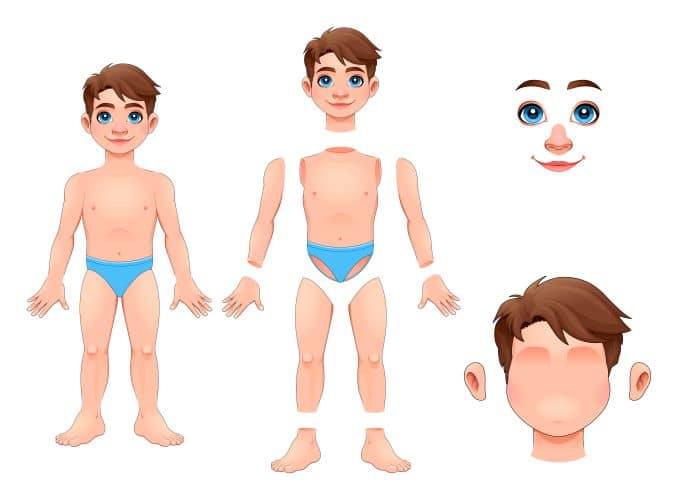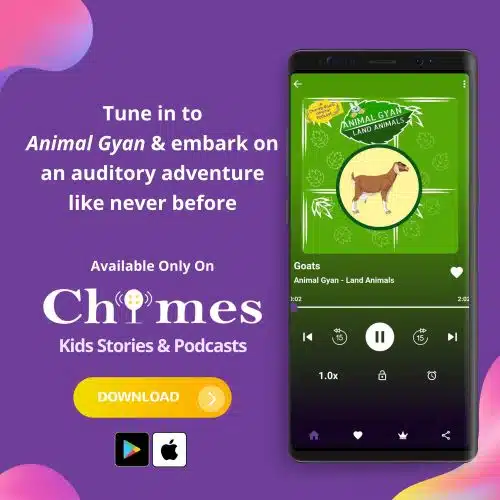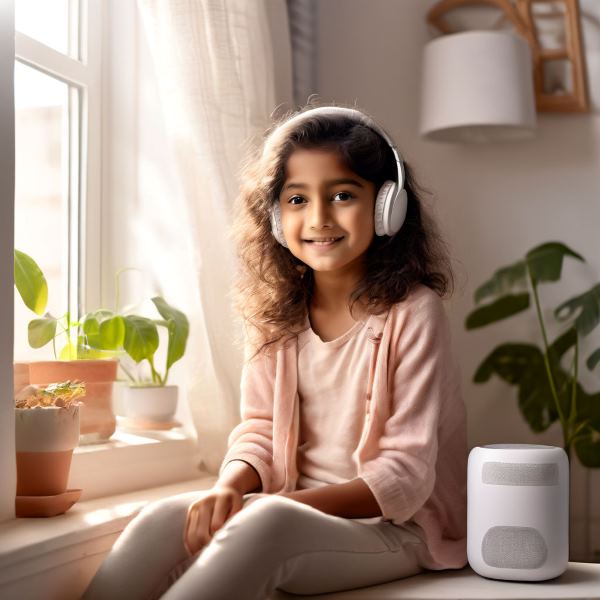Learn About The 10 Parts Of The Body
Introduction
Learning body parts in English is an essential skill for kids as it helps them develop their vocabulary and communication skills. Understanding body parts not only enables children to express themselves better but also promotes body awareness and self-identification. By teaching body parts in a fun and interactive way, kids can engage in activities that enhance their learning experience. Through games, songs, and visual aids, children can grasp the names and functions of different body parts, making the learning process enjoyable and memorable.
Continue Reading About Parts Of Body Below >>
Eyes: The windows to the world
The eyes are the windows to the world. They help us see and perceive the beauty around us. Kids can learn about the different parts of the eye, such as the iris, pupil, and eyelashes, and understand how they work together to help us see. Engaging in activities like drawing or coloring eyes can further reinforce their understanding.
Continue Reading About Parts Of Body Below >>
Ears: Listening and hearing
Ears are responsible for our sense of hearing. Children can learn about the different parts of the ear, such as the outer ear, earlobe, and eardrum. Explaining how sound travels through the ear and how we can hear different sounds can make the learning experience more interactive. Playing games like “Guess the Sound” can also help kids identify and associate sounds with their corresponding body part.
Continue Reading About Parts Of Body Below >>
Nose: Smelling and breathing
The nose is not only responsible for our sense of smell but also plays a crucial role in breathing. Children can learn about the different parts of the nose, such as the nostrils and nasal cavity, and understand how air enters and exits our body through the nose. Explaining how the sense of smell helps us identify different scents and flavors can make the learning experience more engaging. Encouraging kids to participate in activities like smelling different objects or identifying various aromas can help them associate the sense of smell with the nose.
Mouth: Eating and speaking
The mouth is not only the gateway to our digestive system but also an essential tool for communication. Children can learn about the different parts of the mouth, such as the lips, teeth, and tongue, and understand their functions. Explaining how we use our mouth to eat, drink, and speak can help kids grasp the importance of this body part. Engaging in activities like mimicking different mouth movements or practicing pronunciation of words can make the learning experience interactive and enjoyable for children.
Shoulders: Connecting the arms to the body
Shoulders connect our arms to our body and allow us to move them freely. Kids can learn about the shoulder joint and the muscles that help us lift and rotate our arms. Engaging in activities like shoulder shrugs or imitating different arm movements can help children understand the role of shoulders in our daily activities.
Elbows: Bending and extending the arms
Elbows are the joints that allow us to bend and extend our arms. Children can learn about the hinge-like structure of the elbow joint and how it enables us to perform various actions like throwing, catching, or hugging. Encouraging kids to imitate different elbow movements, like bending and straightening, can help them grasp the concept more effectively.
Hands: Grasping and touching
Our hands are incredibly versatile and play a vital role in our daily lives. Children can learn about the different parts of the hand, such as the fingers, palm, and nails, and understand how each part contributes to its functionality. Explaining how we use our hands for activities like grasping, holding, and manipulating objects can help kids appreciate the importance of hands. Engaging in activities like finger painting, playing with building blocks, or practicing fine motor skills through tasks like threading beads can further enhance their understanding of the capabilities of their hands.
Hips: Connecting the legs to the body
Hips connect our legs to our body and provide stability and support. Kids can learn about the hip joint and the muscles involved in walking and running. Explaining how the hip joint allows us to move our legs in different directions can be done through activities like dancing or playing “Simon Says” with leg movements.
Knees: Bending and straightening the leg
Knees are remarkable joints that play a crucial role in our ability to move and perform various activities. Children can learn about the structure of the knee joint, including the kneecap and the ligaments that provide stability. Explaining how the knee joint acts as a hinge, allowing us to bend and straighten our legs, can help kids understand its importance in everyday movements like walking, running, and jumping. Emphasizing the need to take care of our knees by avoiding excessive strain or impact can help children develop an appreciation for the role knees play in our overall mobility. Engaging in activities like squatting, hopping, or even practicing simple knee exercises can help children develop strength and flexibility in their knees, promoting healthy movement patterns and reducing the risk of knee-related injuries.
Feet: Walking and running
Our feet are remarkable structures that provide support, balance, and enable us to move around. Children can learn about the different parts of the feet, such as the toes, arches, and heels, and understand how they work together to help us walk, run, and jump. Explaining the importance of wearing proper footwear to protect our feet and prevent injuries can help kids appreciate the care their feet require. Engaging in activities like walking on different surfaces, playing games that involve foot movements, or even practicing simple foot exercises can help children develop a better understanding of their feet’s capabilities.
Conclusion
learning body parts in English for kids is an exciting and important endeavor. By teaching them about different body parts through interactive methods, we can help children develop their vocabulary, communication skills, and body awareness. Engaging in games, songs, and activities that involve body parts can make the learning process enjoyable and memorable for kids. Encouraging them to practice and reinforce their learning through various activities will further enhance their understanding and retention of the knowledge gained.
FAQ'S About Parts Of The Body
What is the largest bone in the human body?
The femur is the largest bone in human body.
What is the smallest bone in the human body?
The stapes, which is the smallest bone in the body and is located in the middle ear.
What is the most complex muscle in the human body?
The skeletal muscle, which is responsible for controlling the movement of our body.
What is the largest organ in the human body?
The skin, which covers the entire body and plays a vital role in protecting it from external factors.

10 Brutal Natural Disasters and Their Impact
10 Brutal Natural Disasters and Their Impact For Tons of

Bermuda Triangle: Mystery That Would Blow Your Mind
BERMUDA TRIANGLE: Beyond Belief Mysteries For Tons of Kids Stories


Seven Ancient Wonders Of The World
Seven Ancient Wonders Of The World Listen To Ancient Wonders





